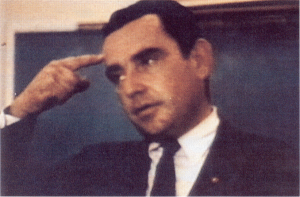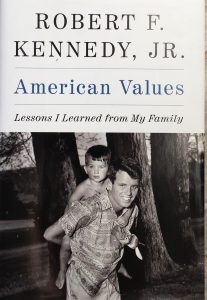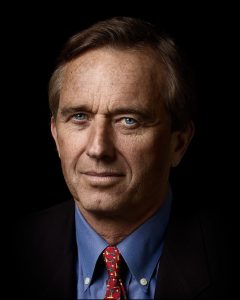Bob Dylan releases first original song in eight years, 17-minute track about JFK
A day that will live on in infamy
President Kennedy was a-ridin’ high
Good day to be livin’ and a good day to die
Being led to the slaughter like a sacrificial lamb
He said, “Wait a minute, boys, you know who I am?”
“Of course we do, we know who you are!”
Then they blew off his head while he was still in the car
Shot down like a dog in broad daylight
Was a matter of timing and the timing was right
You got unpaid debts, we’ve come to collect
We’re gonna kill you with hatred, without any respect
We’ll mock you and shock you and we’ll put it in your face
We’ve already got someone here to take your place
The day they blew out the brains of the king
Thousands were watching, no one saw a thing
It happened so quickly, so quick, by surprise
Right there in front of everyone’s eyes
Greatest magic trick ever under the sun
Perfectly executed, skillfully done
Wolfman, oh wolfman, oh wolfman howl
Rub-a-dub-dub, it’s a murder most foul [Verse 2] Hush, little children, you’ll understand
The Beatles are comin’, they’re gonna hold your hand
Slide down the banister, go get your coat
Ferry ‘cross the Mersey and go for the throat
There’s three bums comin’ all dressed in rags
Pick up the pieces and lower the flags
I’m goin’ to Woodstock, it’s the Aquarian Age
Then I’ll go to Altamont and sit near the stage
Put your head out the window, let the good times roll
There’s a party going on behind the Grassy Knoll
Stack up the bricks, pour the cement
Don’t say Dallas don’t love you, Mr. President
Put your foot in the tank and then step on the gas
Try to make it to the triple underpass
Blackface singer, whiteface clown
Better not show your faces after the sun goes down
Up in the red light district, they’ve got cop on the beat
Living in a nightmare on Elm Street
When you’re down on Deep Ellum, put your money in your shoe
Don’t ask what your country can do for you
Cash on the ballot, money to burn
Dealey Plaza, make a left-hand turn
I’m going down to the crossroads, gonna flag a ride
The place where faith, hope, and charity lie
Shoot him while he runs, boy, shoot him while you can
See if you can shoot the invisible man
Goodbye, Charlie! Goodbye, Uncle Sam!
Frankly, Miss Scarlett, I don’t give a damn
What is the truth, and where did it go?
Ask Oswald and Ruby, they oughta know
“Shut your mouth,” said a wise old owl
Business is business, and it’s a murder most foul [Verse 3] Tommy, can you hear me? I’m the Acid Queen
I’m riding in a long, black Lincoln limousine
Ridin’ in the backseat next to my wife
Headed straight on in to the afterlife
I’m leaning to the left, I got my head in her lap
Hold on, I’ve been led into some kind of a trap
Where we ask no quarter, and no quarter do we give
We’re right down the street, from the street where you live
They mutilated his body and they took out his brain
What more could they do? They piled on the pain
But his soul was not there where it was supposed to be at
For the last fifty years they’ve been searchin’ for that
Freedom, oh freedom, freedom over me
I hate to tell you, mister, but only dead men are free
Send me some lovin’, then tell me no lie
Throw the gun in the gutter and walk on by
Wake up, little Susie, let’s go for a drive
Cross the Trinity River, let’s keep hope alive
Turn the radio on, don’t touch the dials
Parkland hospital, only six more miles
You got me dizzy, Miss Lizzy, you filled me with lead
That magic bullet of yours has gone to my head
I’m just a patsy like Patsy Cline
Never shot anyone from in front or behind
I’ve blood in my eye, got blood in my ear
I’m never gonna make it to the new frontier
Zapruder’s film I seen night before
Seen it thirty-three times, maybe more
It’s vile and deceitful, it’s cruel and it’s mean
Ugliest thing that you ever have seen
They killed him once and they killed him twice
Killed him like a human sacrifice
The day that they killed him, someone said to me, “Son
The age of the Antichrist has just only begun”
Air Force One comin’ in through the gate
Johnson sworn in at 2:38
Let me know when you decide to throw in the towel
It is what it is, and it’s murder most foul [Verse 4] What’s new, pussycat? What’d I say?
I said the soul of a nation been torn away
And it’s beginning to go into a slow decay
And that it’s thirty-six hours past Judgment Day
Wolfman Jack, he’s speaking in tongues
He’s going on and on at the top of his lungs
Play me a song, Mr. Wolfman Jack
Play it for me in my long Cadillac
Play me that “Only the Good Die Young”
Take me to the place Tom Dooley was hung
Play “St. James Infirmary” and the Court of King James
If you want to remember, you better write down the names
Play Etta James, too, play “I’d Rather Go Blind”
Play it for the man with the telepathic mind
Play John Lee Hooker, play “Scratch My Back”
Play it for that strip club owner named Jack
Guitar Slim going down slow
Play it for me and for Marilyn Monroe [Verse 5] Play “Please Don’t Let Me Be Misunderstood”
Play it for the First Lady, she ain’t feeling any good
Play Don Henley, play Glenn Frey
Take it to the limit and let it go by
Play it for Carl Wilson, too
Looking far, far away down Gower Avenue
Play tragedy, play “Twilight Time”
Take me back to Tulsa to the scene of the crime
Play another one and “Another One Bites the Dust”
Play “The Old Rugged Cross” and “In God We Trust”
Ride the pink horse down that long, lonesome road
Stand there and wait for his head to explode
Play “Mystery Train” for Mr. Mystery
The man who fell down dead like a rootless tree
Play it for the reverend, play it for the pastor
Play it for the dog that got no master
Play Oscar Peterson, play Stan Getz
Play “Blue Sky,” play Dickey Betts
Play Art Pepper, Thelonious Monk
Charlie Parker and all that junk
All that junk and “All That Jazz”
Play something for the Birdman of Alcatraz
Play Buster Keaton, play Harold Lloyd
Play Bugsy Siegel, play Pretty Boy Floyd
Play the numbers, play the odds
Play “Cry Me A River” for the Lord of the gods
Play Number nine, play Number six
Play it for Lindsey and Stevie Nicks
Play Nat King Cole, play “Nature Boy”
Play “Down In The Boondocks” for Terry Malloy
Play “It Happened One Night” and “One Night of Sin”
There’s twelve million souls that are listening in
Play “Merchant of Venice”, play “Merchants of Death”
Play “Stella by Starlight” for Lady Macbeth
Don’t worry, Mr. President, help’s on the way
Your brothers are comin’, there’ll be hell to pay
Brothers? What brothers? What’s this about hell?
Tell them, “We’re waiting, keep coming,” we’ll get them as well
Love Field is where his plane touched down
But it never did get back up off the ground
Was a hard act to follow, second to none
They killed him on the altar of the rising sun
Play “Misty” for me and “That Old Devil Moon”
Play “Anything Goes” and “Memphis in June”
Play “Lonely At the Top” and “Lonely Are the Brave”
Play it for Houdini spinning around his grave
Play Jelly Roll Morton, play “Lucille”
Play “Deep In a Dream”, and play “Driving Wheel”
Play “Moonlight Sonata” in F-sharp
And “A Key to the Highway” for the king on the harp
Play “Marching Through Georgia” and “Dumbarton’s Drums”
Play darkness and death will come when it comes
Play “Love Me Or Leave Me” by the great Bud Powell
Play “The Blood-stained Banner”, play “Murder Most Foul”












